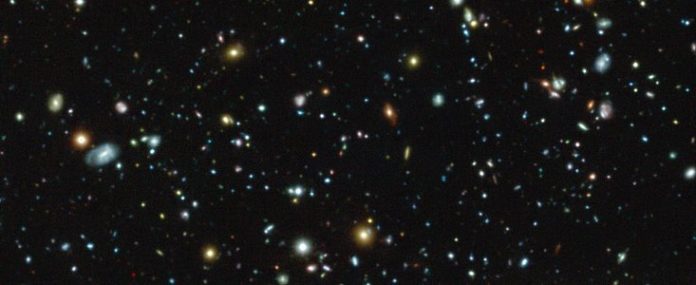Astronomers using the MUSE instrument on ESO’s Very Large Telescope in Chile have conducted the deepest spectroscopic survey ever. They concentrated on the Hubble Ultra Deep Field, measuring distances and properties of 1600 very faint galaxies including 72 galaxies that have never been distinguished, even by Hubble itself.
Scientists used MUSE (Multi Unit Spectroscopic Explorer) to identify the Hubble Ultra Deep Field (heic0406). It is a much-studied patch of the southern constellation of Fornax (The Furnace).
The precise spectroscopic information was measured for 1600 galaxies, ten times as many galaxies as has been painstakingly obtained in this field over the last decade by ground-based telescopes.
Their observations revealed that a menagerie of galaxies dating back to less than a billion years after the Big Bang. The range was along these lines watched commonly by Hubble and different telescopes, bringing about the most profound perspective of the Universe to date.
In spite of the profundity of the Hubble perceptions, MUSE has — among numerous different outcomes — uncovered 72 cosmic systems never found in this exceptionally minor region of the sky.
The data provides a new view of dim, very distant galaxies, seen near the beginning of the Universe about 13 billion years ago.
Roland Bacon said, “MUSE can do something that Hubble can’t — it splits up the light from every point in the image into its component colors to create a spectrum. This allows us to measure the distance, colors and other properties of all the galaxies we can see — including some that are invisible to Hubble itself.”
The study uncovered 72 applicant universes known as Lyman-alpha producers that sparkle just in Lyman-alpha light.
Jarle Brinchmann, lead author of one of the papers said, “MUSE has the unique ability to extract information about some of the earliest galaxies in the Universe — even in a part of the sky that is already very well studied. We learn things about these galaxies that is only possible with spectroscopy, such as chemical content and internal motions — not galaxy by galaxy but all at once for all the galaxies!”
The survey also revealed the systematic detection of luminous hydrogen halos around galaxies in the early Universe. It gives astronomers a new and promising way to study how material flows in and out of early galaxies.
